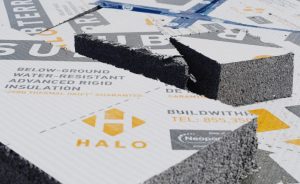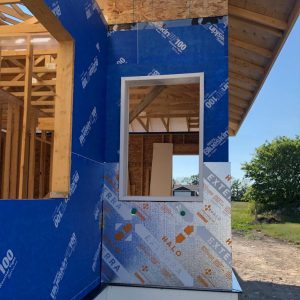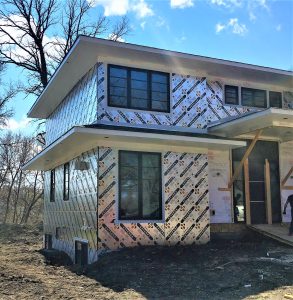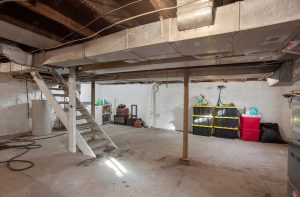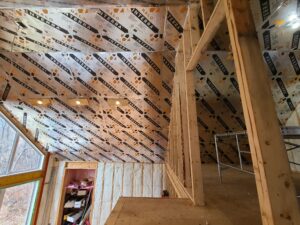Radon is a hazardous, radioactive gas that’s prevalent across much of North America. But while our building codes have a working solution, what if we told you that there’s a product that performs 7 times better at stopping Radon ingress?

This post will examine the test results comparing the Radon-retarding properties of Halo’s Subterra Plus versus the current code requirement.
Radon Poses a Significant Health Risk in Canada and the US
Radon is a radioactive gas produced by the decay of uranium. It occurs naturally in the soil and groundwater and rises unobstructed through the ground and human-made structures, such as building foundations.
While it’s too diluted to be hazardous outdoors, Radon concentration can quickly build up inside buildings. Prolonged exposure to high radon levels is extremely harmful to human health, and the gas has been directly linked to 16% of all lung cancer deaths.
Previously, it was thought that Radon was only prevalent in specific areas of North America. But after extensive testing, scientists determined that dangerous concentrations of the gas are present in up to 7% of all homes in Canada.
That said, some areas recorded far higher concentrations than others:
That said, some areas recorded far higher concentrations than others:

High levels of Radon are also present in the US:

Stopping Radon From Entering Our Homes And Buildings
Without a dedicated barrier and ventilation system, Radon travels freely through concrete foundations and accumulates in buildings. 6-mil polyethylene is the most commonly accepted barrier, often installed under a slab on grade and used in conjunction with a vertical exhaust pipe that allows Radon to escape to the outside. A 6-mil polyethylene membrane — or an equivalent — is the minimum Radon retarder mandated by the International Residential Code (IRC).
But we all know that codes often require only a bare-bones solution. So the 2 lingering questions are:
Can 6-mil poly be trusted to create a permanent, airtight seal that effectively blocks Radon ingress?
and,
Is this minimum IRC requirement adequate in keeping households safe from this invisible, deadly carcinogen, or is there a more robust gas retarder solution?
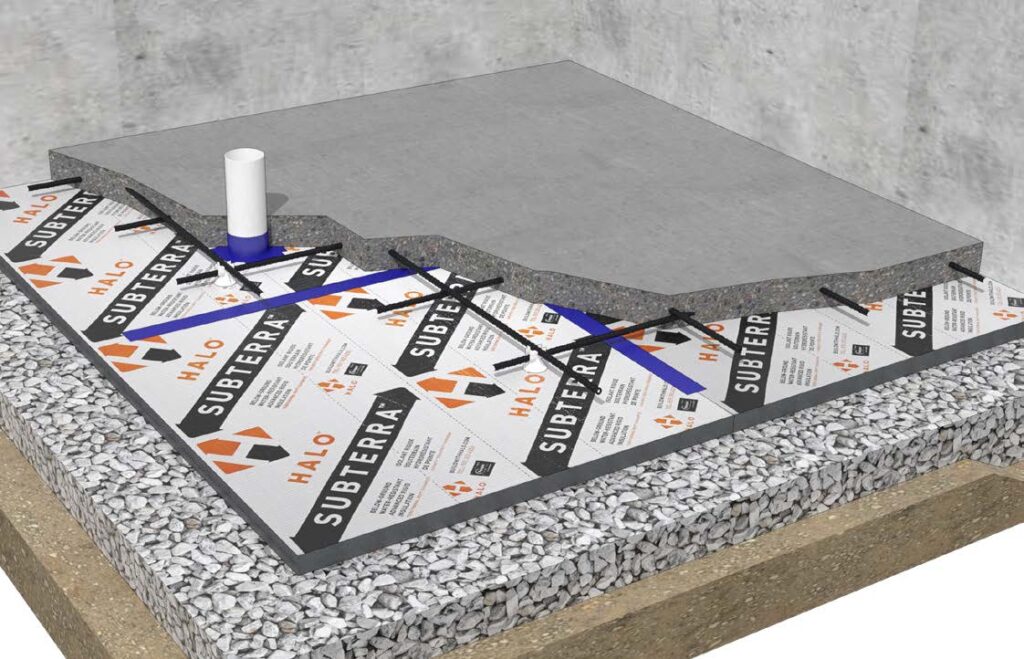
How Halo Subterra Plus Compares to 6-mil Poly In Blocking Radon Ingress
To find out if there is a more effective Radon retarder, the National Research Council of Canada (NRC) tested and compared the performance of Halo Subterra Plus vs. the 6-mil poly.
Both samples were tested using a Radon Diffusion Test Chamber (RDTC). During the test, Radon was introduced into the dosing compartment; then its concentration was measured in the receiving compartment. The samples were used to separate the dosing and receiving compartments

To prevent unintentional leaks from skewing the test data, both samples were sealed and tested for leaks before Radon was released into the dosing compartment. Once underway, the test lasted around 400 hours for each sample before the team analyzed Radon concentration in the receiving compartment. Here’s what the NRC team found as the test concluded:
- Subterra Plus with tuck tape is 7 times more resistant to Radon than the code-mandated 6-mil poly solution
- Subterra Plus boards, when used with tuck tape, are far more effective at preventing Radon ingress than 6-mil poly
Based on these independent tests, it’s clear that Halo’s Subterra Plus exceeds the performance of 6-mil poly in blocking the harmful gas while providing under-slab insulation as well!
Halo’s Subterra series is also currently in testing at the NRC laboratory and is expected to pass the test just like Subterra Plus.
These test results are accepted in the US as well as Canada.
XPS insulation products, on the other hand, do not function as the radon barrier.
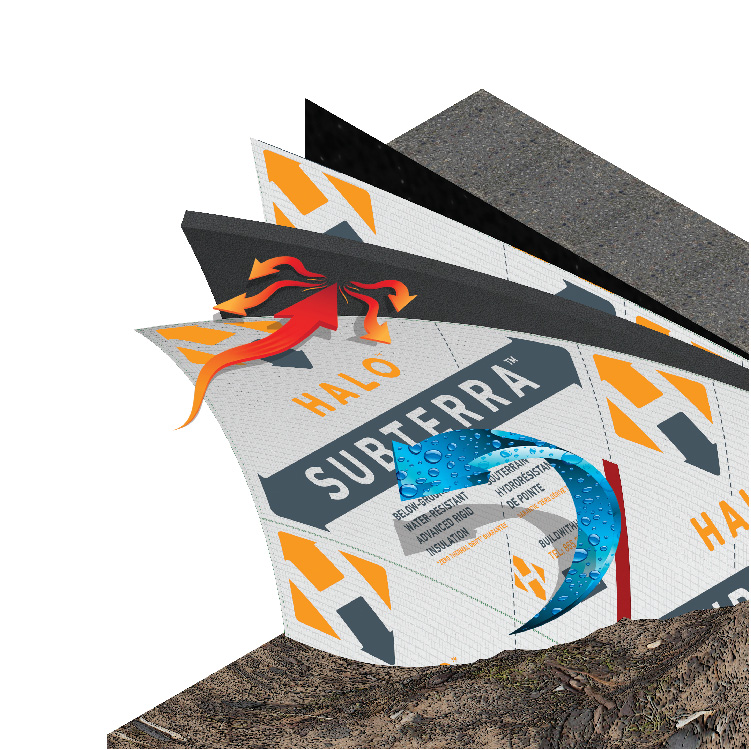

Don't miss a thing!
Subscribe for exclusive content, insider industry news and limited edition webcasts.
Installing Halo’s Subterra Plus as a Radon Barrier (And Suggested Venting Details)
Subterra Plus panels can function as a Radon barrier as either part of a depressurization system or on top of an existing one to further mitigate Radon diffusion. In either scenario, installation is pretty straightforward, but let’s have a look at the required steps for placing Subterra beneath a slab-on-grade:
- Level and compact the base material. Make sure there are no protrusions that could damage the Subterra boards.
- Install the Subterra Protection board. Placing the boards in any orientation, cover the entire surface and seal all joints with tuck tape (and fill them with foam if they exceed ¼ inches).
- Seal the perimeter. You can do this with either flexible caulking, air/vapor barrier membrane, or air/vapor barrier membrane and insulation.
- Pour the slab.
- Seal around penetrations with sheathing tape or mastic sealant.
- Cut a hole for the exhaust pipe. Make sure the hole will fit the pipe tightly.
- Apply sheathing tape around the exhaust pipe penetration.
For more in-depth guidance, you can visit our resources library and check out the Subterra Protection Board Install Guide.
Wrapping It Up
Building codes generally fall a step behind the science.
But that doesn’t mean we shouldn’t adopt better building methods when they become available — especially when it comes to something so critical for human health as Radon mitigation.
Halo’s Subterra Plus products are 7 times more effective than the code-mandated 6-mil poly at stopping Radon.
Save a construction step and choose the under-slab insulation that functions as your Radon Barrier as well!


